You should always look twice by Gil Dye
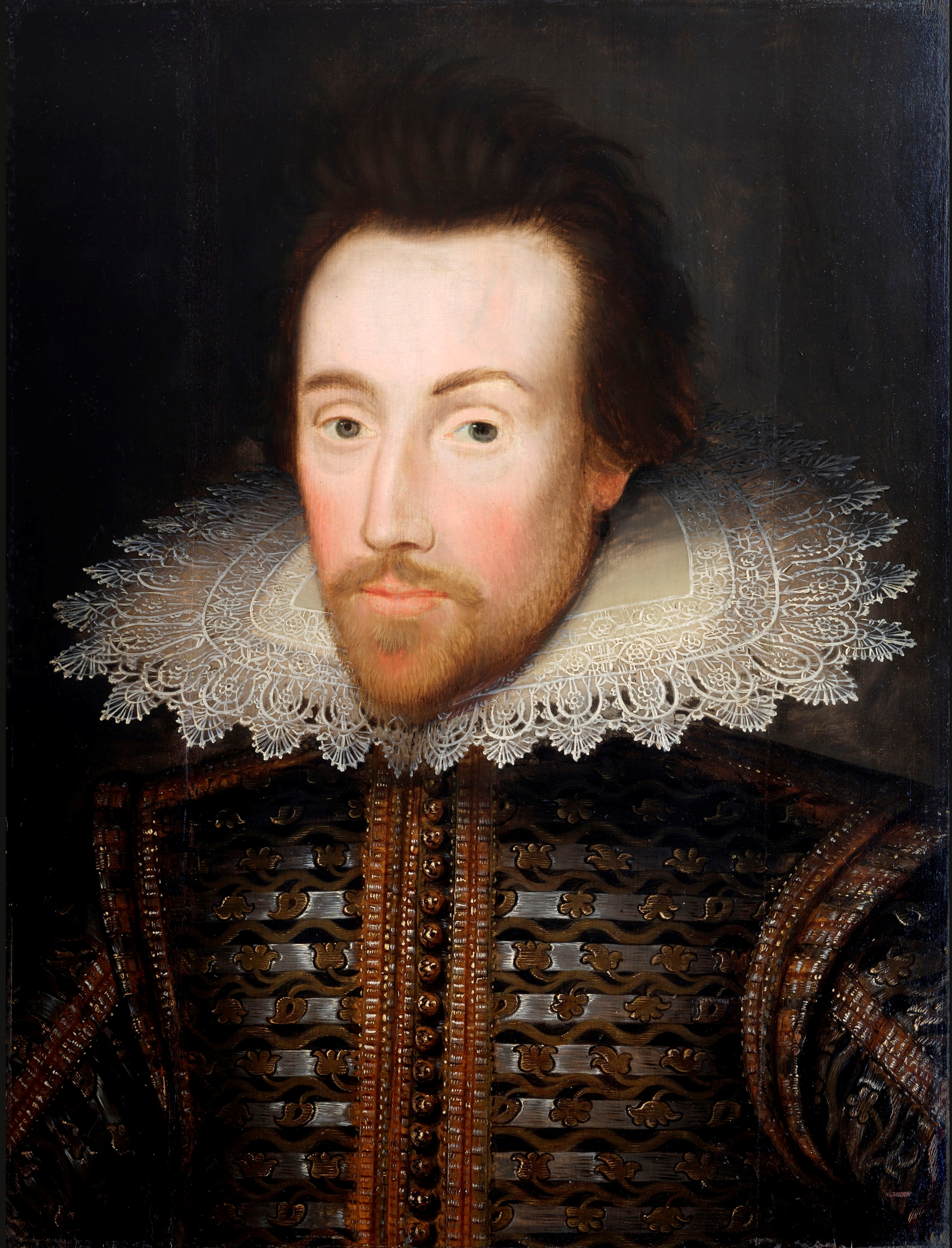
Portrait owned by The Shakespeare Birthplace Trust.
During my second term as Hon Secretary, when The Lace Guild was working towards museum registration, the Museums’ Association Journal appeared regularly in my pigeon-hole at The Hollies. As with any such journal there were good months and bad months, but in most issues I found plenty of general interest, in addition to specific information that helped with putting together the successful registration application. When I retired as secretary I missed reading the journal and decided to take out my own subscription to the Museums’ Association (and was delighted to discover that this gave me not only the monthly journal, but also free entry to an amazing variety of museums and exhibitions).
That lengthy preamble goes some way to explaining how I came to see this picture in the September 2011 issue of the journal. First thought was slightly dismissive: ‘Oh, yes, that is the ‘Cobbe portrait’ of William Shakespeare’; an image that I had seen many times over the past few years, but had not studied in any detail, since the lace collar is needle not bobbin lace (and there are not enough hours in the day to pursue both!).
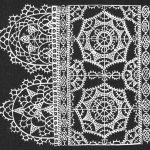
Reticella lace pattern from Federico Vinciolo’s ‘Les Singuliers et Nouveaux Pourtaicts’, first published in Paris in 1587 (now available in reprint from Dover books). This pattern is of the type depicted in the Cobbe collection portrait.
Click for larger image.
Then I took a second look, and was astounded to discover that the two collars (when compared to the portrait owned by the Shakespeare Birthplace Trust, above left) are totally different, in fact they are so different that this one is obviously bobbin lace. Questions started buzzing: why should two otherwise almost identical portraits have such different lace? Had anyone ever queried the difference? Who would have painted the lace?
My contact at the Shakespeare Birthplace Trust (SBT) put me in touch with Alec Cobbe, whose family has owned the Cobbe portrait since the 18th century. A fascinating e-mail correspondence followed in which I discovered that the Cobbe portrait is believed to have been painted during Shakespeare’s lifetime and that the portrait with the bobbin lace collar which is now in the care of the SBT, is probably a near contemporary copy; I also learned that there are several versions of this copy, including the so-called ‘Janssen Portrait’ which is in the Folger Shakespeare Library in Washington.
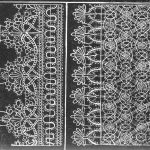
Bobbin lace pattern from Richard Shorleyker’s ‘Schole-House for the Needle’, first published in London in 1623. This pattern is of the type depicted in the Shakespeare Birthplace Trust portrait.
Click for larger image.
That still doesn’t answer the question of why a different collar should be used in the copy. There had been considerable research into the various portraits before the ‘Shakespeare Found’ exhibition at SBT in 2009 and Alec Cobbe says of the lace, ‘We have assumed to date that the different and slightly simpler lace collar in the copies arose either from the original collar not being available to the copyist, or from the artist of the copy just inventing a simpler lace collar from some pictorial source rather than from an original collar.’
If it was an invention, then the artist must have had a very sound knowledge of bobbin lace: the detail is such that it should be possible to work the lace. It is just possible that the artist was also a designer of lace, but it is much more likely that a bobbin lace collar was used as the model – artists’ studios often kept a stock of props for use in their work – maybe somewhere there are other portraits with the same collar? Or perhaps the artist was skilled enough to take the design from one of the pattern books that were available in the early 1600s? I have not been able to find an exact match, but there are many elements of the design in two of the early pattern books: Parasole and Schole House for the Needle.
These two pattern books also have patterns for needle lace, including the style of lace known as Reticella that appears on the Cobbe Portrait. This example of a reticella pattern (top right) comes from another early pattern book published by Federico Vinciolo.
A facsimile of ScholeHouse for the Needle can be purchased from the publisher; scans of many other early pattern books can be found on the following website: http://www.cs.arizona.edu/patterns/weaving.
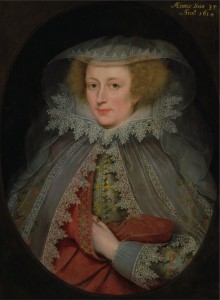
Catherine Killigrew, Lady Jermyn by Marcus Gheeraerts the Younger (1561-1635), oil on panel, 1614
© Yale Center for British Art, Paul Mellon Collection
Click for larger image
Postscript
Jean Leader, a colleague and fellow early-lace enthusiast, has recently alerted me to another pair of portraits where one has bobbin lace and the other needle made:
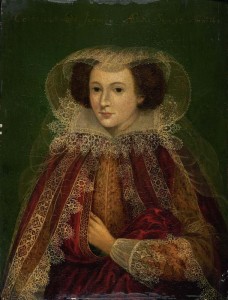
Portrait of Catherine Killigrew, Lady Jermyn (after Marcus Gheeraerts) by unknown artist
© Bury Art Museum, Greater Manchester, UK
Click for larger image
There is a 1614 portrait of Catherine Killigrew, Lady Jermyn, by Marcus Gheeraerts the younger in the Yale Center for British Art (see right) in which Catherine’s collar and veil are lavishly decorated with wide bobbin lace edgings and insertions. In a copy of this portrait (left) in the Bury Gallery in England the fine bobbin lace has been replaced with a heavier Reticella-type needlelace. It would be fascinating to discover how the lace was selected for these portraits.
Article first published in issue 145 of ‘Lace’, the magazine of The Lace Guild, January 2012



Comments
Thank you for this fascinating information. I love the museums of Europe and the Lace always interests me very much. I will continue to look closer now when I study the old portraits.